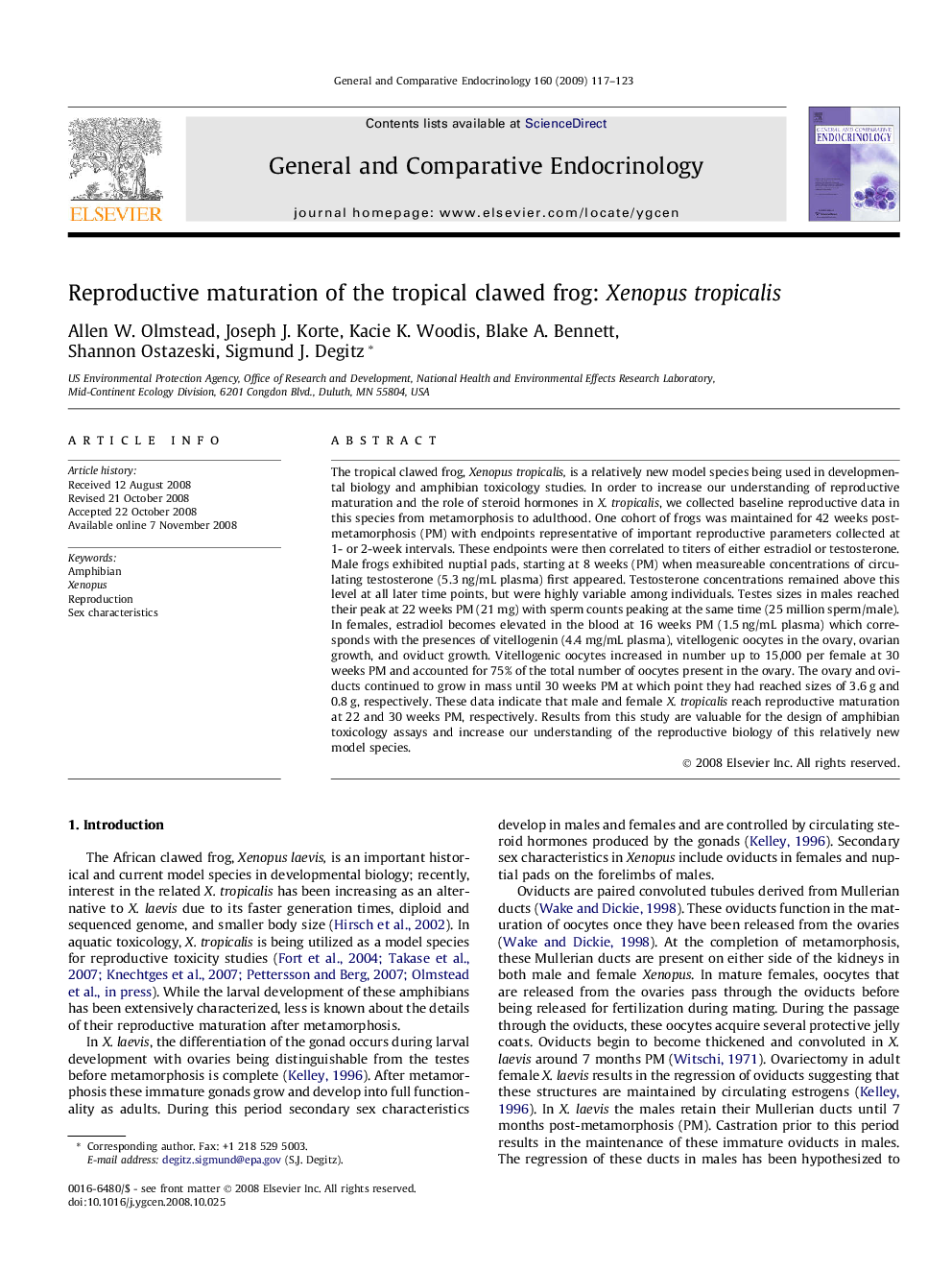| کد مقاله | کد نشریه | سال انتشار | مقاله انگلیسی | نسخه تمام متن |
|---|---|---|---|---|
| 2801615 | 1156168 | 2009 | 7 صفحه PDF | دانلود رایگان |

The tropical clawed frog, Xenopus tropicalis, is a relatively new model species being used in developmental biology and amphibian toxicology studies. In order to increase our understanding of reproductive maturation and the role of steroid hormones in X. tropicalis, we collected baseline reproductive data in this species from metamorphosis to adulthood. One cohort of frogs was maintained for 42 weeks post-metamorphosis (PM) with endpoints representative of important reproductive parameters collected at 1- or 2-week intervals. These endpoints were then correlated to titers of either estradiol or testosterone. Male frogs exhibited nuptial pads, starting at 8 weeks (PM) when measureable concentrations of circulating testosterone (5.3 ng/mL plasma) first appeared. Testosterone concentrations remained above this level at all later time points, but were highly variable among individuals. Testes sizes in males reached their peak at 22 weeks PM (21 mg) with sperm counts peaking at the same time (25 million sperm/male). In females, estradiol becomes elevated in the blood at 16 weeks PM (1.5 ng/mL plasma) which corresponds with the presences of vitellogenin (4.4 mg/mL plasma), vitellogenic oocytes in the ovary, ovarian growth, and oviduct growth. Vitellogenic oocytes increased in number up to 15,000 per female at 30 weeks PM and accounted for 75% of the total number of oocytes present in the ovary. The ovary and oviducts continued to grow in mass until 30 weeks PM at which point they had reached sizes of 3.6 g and 0.8 g, respectively. These data indicate that male and female X. tropicalis reach reproductive maturation at 22 and 30 weeks PM, respectively. Results from this study are valuable for the design of amphibian toxicology assays and increase our understanding of the reproductive biology of this relatively new model species.
Journal: General and Comparative Endocrinology - Volume 160, Issue 2, 15 January 2009, Pages 117–123